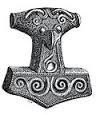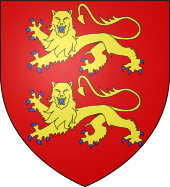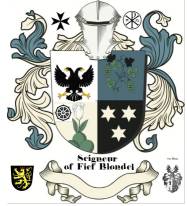Baron Longford Baron Annaly - Feudal Principality Seignory




⚜️ Succession to the Principality of Annaly–Longford: The Baron Delvin and Earl of Westmeath as Legal Heirs to Regalian Sovereignty of Meath & Teffia & AnnalyThe Honour and Seignory of Annaly–Longford, rooted in both Gaelic princely tradition and English feudal law, represents one of the most enduring examples of territorial sovereignty in Ireland. Through a continuous chain of royal grants, hereditary offices, and ecclesiastical recognition, the Nugent family—Barons of Delvin and later Earls of Westmeath—emerged as the legal successors to the ancient principalities of Meath, Teffia, and Annaly. I. From Palatinate to Barony: The De Lacy–Nugent Succession (1172–1202)The succession begins with the 1172 grant of the Lordship of Meath to Hugh de Lacy by King Henry II. This palatine fief carried regalian privileges, including jurisdiction over royal pleas, and functioned as a quasi-sovereign territory. Around 1202, de Lacy conveyed the lands of Delvin (Delbhna) to Sir Gilbert de Nugent, his chief retainer and brother-in-law. This grant established the hereditary Barony of Delvin, embedding the Nugents within the regalian structure of Meath and positioning them as feudal overlords of western Meath and the borderlands of Annaly. II. Integration of Gaelic Nobility and Territorial Consolidation (13th–15th Centuries)The Nugents governed lands formerly held by Gaelic septs such as the O’Fenelon and O’Skully clans of Teffia. These groups became vassals under the Delvin barony, blending native Irish customs with Norman feudal governance. By the 1400s, the Barons Delvin were the sole hereditary nobility of Westmeath, exercising judicial and administrative authority. William Nugent’s role as Sheriff of Meath in 1401 confirmed their viceregal jurisdiction within the Pale’s western frontier. III. Tudor Elevation and Military Command (1494–1550)Under the Tudors, the Delvins were elevated to national prominence. Gilbert Nugent was appointed Chief Captain of the King’s Forces in Ireland in 1494, and Richard Nugent became Commander of all forces in Dublin, Meath, Kildare, and Louth in 1496. These appointments conferred quasi-princely military authority, reinforcing their status as regalian lords under the Crown. IV. Annexation of Annaly and Expansion of Feudal Holdings (1552–1565)The absorption of Annaly into Crown control marked a turning point. In 1552, Edward VI granted Baron Delvin strategic estates in Annaly, including Inchcleraun and Inchmore. Subsequent charters under Philip and Mary expanded these holdings to include Abbeylara, Granard, and Columbkille. These grants predated the formal creation of County Longford, confirming the Delvins as feudal lords of Annaly. V. Princely Jurisdiction: The Captaincy of Slewaght William (1565)Queen Elizabeth I’s 1565 grant to Christopher Nugent of the Captaincy and Chiefship of Slewaght William was equivalent to a ducal or princely title. It conveyed hereditary command over local clans, taxation rights, and ecclesiastical jurisdiction—effectively recognizing Delvin as Prince and Feudal Chief of Eastern Longford. VI. Economic Sovereignty and Market Rights (1605)In 1605, James I granted Baron Delvin market and fair rights in Longford, including courts baron and leet. These privileges affirmed Delvin’s regalian jurisdiction over trade, law, and taxation, and recognized Longford as the capital seat of Annaly under Nugent overlordship. VII. Confirmation of the Seignory and Manorial Courts (1609–1620)Between 1609 and 1620, James I reaffirmed Nugent rights to key Annaly estates, including Liserdawle, Smere, Abbeylara, and Templemichael. These grants carried full manorial jurisdiction—courts leet, frankpledge, seneschal appointments—confirming the Seignory of Annaly–Longford as a feudal liberty held directly from the Crown. VIII. Comital Elevation and Papal Recognition (1621–1635)In 1621, Richard Nugent was elevated to Earl of Westmeath, uniting Delvin and Annaly under a single comital dignity. In 1635, Pope Urban VIII issued a decree allowing the Earl to retain Inchmore Monastery during the schism, a rare ecclesiastical recognition of proprietary sovereignty. IX. Legal Character of the Annaly–Longford SeignoryThe cumulative grants and offices—from the de Lacy fief to the Jacobean confirmations—establish the Annaly–Longford Seignory as a regalian jurisdiction. Held in capite, with courts, markets, and ecclesiastical advowsons, and with hereditary command over clans, it meets the criteria of a Feudal Barony under English law and a Feudal Principality by Irish and Continental analogy. X. Conclusion: A Continuous Chain of SovereigntyFrom the twelfth-century Norman partition to seventeenth-century royal and papal confirmations, the Nugents of Delvin and Westmeath preserved a continuous chain of feudal sovereignty over Longford–Annaly. As successors to the O’Fearghail princes and Gaelic nobility of Teffia, and as Crown-appointed barons, captains, and market lords, they embodied both the ceremonial and legal dignity of a principality under the Crown. The Honour of Annaly–Longford thus stands as a rare example of uninterrupted regalian succession—anchored in land, law, and lineage. The Honour of Annaly–Longford has a documented title chain spanning over 800 years, beginning with its feudal grant to Gilbert de Nugent in the 12th century and continuing through uninterrupted succession to the Nugent family, culminating in its conveyance in fee simple in the late 20th century. 🏰 Origins of the Principality of Annaly Longford : From Gaelic Sovereignty to Norman Feudalism
📜 Feudal Tenure and Royal Confirmations
🧬 Modern Conveyance and Fee Simple Title
🧭 Summary of Title Chain (1171–Present)
⚖️ Legal and Ceremonial ImplicationsThis 800-year title chain is unique in its:
The Honour of Annaly–Longford thus stands as one of the few surviving feudal titles with documented legal continuity, territorial jurisdiction, and ceremonial legitimacy. 🏰 The Baron Delvin and Earl of Westmeath: Legal Successors to the Principalities of Meath, Teffia, and AnnalyThe noble titles of Baron Delvin and Earl of Westmeath, held by the Nugent family since the medieval period, represent more than peerage honors—they embody a legal and dynastic succession to three ancient Irish principalities: Meath, Teffia, and Annaly. Through a combination of feudal grants, royal confirmations, marital alliances, and territorial possession, the Nugents emerged as the enduring successors to these Gaelic sovereignties. 🛡️ Meath: From Gaelic Kingdom to Palatine LordshipThe Kingdom of Meath (Mide) was one of the five great provinces of ancient Ireland, ruled by the Clann Cholmáin branch of the southern Uí Néill. It encompassed much of central Ireland, including modern Westmeath and parts of Longford. In 1172, King Henry II granted the entire kingdom to Hugh de Lacy as a palatine liberty, giving him quasi-regal powers to subinfeudate and govern. Among de Lacy’s most trusted vassals was Gilbert de Nugent, who received the Barony of Delvin—a strategic lordship in western Meath. Gilbert’s marriage to de Lacy’s sister further reinforced his dynastic claim, positioning the Nugents as both feudal and familial successors to the de Lacy line. When the senior de Lacy male line became extinct in the 13th century, the Nugents retained their holdings and were later confirmed by royal patents. 🏞️ Teffia: The Western Frontier of MeathTeffia (Tethbae) was a sub-region of Meath, historically divided into North and South Teffia. It included lands in modern Westmeath and Longford, and was inhabited by clans such as the Uí Néill and Uí Fhearghail. As the de Lacy lordship expanded westward, Teffia became part of the feudal structure granted to the Nugents. The Barony of Delvin included lands in Teffia, and later royal confirmations—such as those under Edward VI and Elizabeth I—explicitly recognized Nugent control over these territories. Thus, the Nugents inherited not only the title but also the territorial jurisdiction of Teffia’s Gaelic rulers. 🌄 Annaly: Gaelic Sovereignty and Feudal IntegrationAnnaly (Anghaile), centered in modern County Longford, was ruled by the Ó Fearghail (O’Farrell) dynasty. Though fiercely independent, the region was gradually absorbed into the English administrative system through surrender and regrant. In 1552, Sir Richard Nugent, Baron Delvin, received letters patent confirming possession of lands in Annaly, including those formerly held by the O’Farrell princes. This grant marked a formal legal succession from Gaelic sovereignty to English feudal tenure, with the Nugents assuming the manorial and judicial rights once exercised by the native rulers. Later patents under Elizabeth I and James I reaffirmed this status, culminating in the creation of the Earl of Westmeath title in 1621. Summary Timeline
Sources: 📜 Legal and Dynastic ContinuityThe Nugents’ succession to Meath, Teffia, and Annaly rests on four pillars:
Unlike many continental nobles who lost land and jurisdiction, the Nugents maintained both title and territory, making their succession legally robust and historically continuous. 🧭 Conclusion: A Living Legacy of SovereigntyThe titles of Baron Delvin and Earl of Westmeath are not mere relics—they are the living legal successors to the principalities of Meath, Teffia, and Annaly. Through dynastic endurance, feudal law, and sovereign recognition, the Nugents preserved the territorial and ceremonial identity of central Ireland’s ancient rulers. Their legacy offers a rare example of uninterrupted noble succession from Gaelic sovereignty to modern peerage. 🏰 Comparative Framework: Annaly–Longford vs. Continental Titles
🧬 Why Annaly–Longford Holds Greater Value
🧭 Strategic ImplicationIf one were to present both titles to a legal historian, asset appraiser, or institutional partner, the Annaly–Longford honour would likely be seen as:
🏰 Context: Feudal Law and Marital AlliancesIn the 12th century, feudal landholding in Ireland was governed by a mix of Norman custom and royal prerogative. Hugh de Lacy, as Lord of Meath, held his territory as a palatine liberty directly from King Henry II. He had the authority to subinfeudate lands to his followers, which he did extensively.
📜 Legal and Dynastic ImplicationsWhile marriage alone did not guarantee inheritance, it had several legal and practical effects:
🧬 Succession After de Lacy ExtinctionThe de Lacy line in Meath became extinct in the male line by the mid-13th century. With no direct male heirs, the lands and titles fragmented. However, the Nugents:
This sequence of events—marriage, feudal grant, extinction of the senior line, and royal confirmation—forms a compelling legal and dynastic case for the Nugents as successors to the de Lacy estate in Meath and Annaly. | ||||||||||||||||||||||||||||||||||||||||||||||||
About Longford Pedigree of Longford Annaly Honour of Annaly Longford The Seigneur Lords Paramount Ireland Market & Fair Chief Captain Kings Forces Chief and Captainship of The Annaly Lord Governor of Annaly Prince of Annaly Principality Chief of the Annaly Princes of Longford Feudal Princes of WestMeath Count of the Palatine of Meath A Barony Explained Princes of Annaly Pedigree Sovereign Title Succession Lord of St. Brigit's Longford Abbey Est. 1578 Lord of the Pale Commissioners of the Peace Tenures Abolition Act 1662 - Rights to Sit in Parliament Law of Ireland Seneschal of Meath List of Townlands of Longford Annaly English Pale Kings of Hy Niall Colmanians Court Barons News Irish Kingdoms Lordships of Granard Fishing & Dams Rights Rights of Lords & Barons Datuk Seri Baliwick of Ennerdale Moneylagen Feudal Barons Styles and Dignities Lord Baron Longford Baron de Delvyn Longford Map Lord Baron of Delvin Baron of Temple-Michael Baron of Annaly Kingdom Annaly Lord Conmaicne Baron Annaly Order of Saint Patrick Baron Lerha Granard Baron AbbeyLara Baronies of Longford Princes of Conmhaícne Angaile or Muintir Angaile Baron Lisnanagh or Lissaghanedan Baron Moyashel Moiety of Ardagh Baron Rathline Abbeys of Longford Grants to Delvin Baron Inchcleraun HOLY ISLAND Quaker Island Longoford CO Abbey of All Saints Hereditaments Kingdom of Uí Maine Baron Dungannon Baron Monilagan - Babington Lord Liserdawle Castle Baron Columbkille Kingdom of Breifne or Breny Baron Kilthorne Baron Granarde Count of Killasonna Baron Skryne Baron Cairbre-Gabhra AbbeyShrule Fiefs of the Islands Feudal Westmeath The Island Lords Fief Worship Channel Island History Fief Blondel Fief Blondel Merchandise Events Blondel and King Richard Fief Coin Feudal Guernsey Titles The Feudal System Flag & Arms Castle Site Map Disclaimer Blondel Myth Dictionary Honorable Colonel Mentz Order of St. Columba Valuation of Principality & Barony of Annaly Longford
Feudal Baron of Longford Annaly - Baron Longford Delvin Lord Baron &
Freiherr of Longford Annaly Feudal Barony Principality Count Kingdom of Meath - Feudal Lord of the Fief
Blondel of the Nordic Channel Islands Guernsey Est. 1179 George Mentz
Bio -
George Mentz Noble Title -
George Mentz Ambassador - Order of the Genet
Knighthood Feudalherr - Fief Blondel von der Nordischen
Insel Guernsey Est. 1179 * New York Gazette ®
- Magazine of Wall Street - George
Mentz - George
Mentz - Aspen Commission - Ennerdale - Stoborough - ESG
Commission - Ethnic Lives Matter
- Chartered Financial Manager -
George Mentz
Economist -
George Mentz Ambassador -
George Mentz - George Mentz Celebrity -
George Mentz Speaker - George Mentz Audio Books - George Mentz Courses - George Mentz Celebrity Speaker Wealth
Management -
Counselor George Mentz Esq. - Seigneur Feif Blondel - Lord Baron
Longford Annaly Westmeath
www.BaronLongford.com * www.FiefBlondel.com |




Commissioner George Mentz - George
Mentz Law Professor - George
Mentz Economist
George Mentz News -
George Mentz Illuminati Historian -
George Mentz Net Worth
The Globe and Mail George Mentz
Get Certifications in Finance and Banking to Have Career Growth | AP News